Fuselage hits - page #1
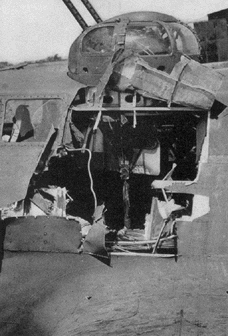
A rocket fired by an enemy fighter inflicted this damage on The Sack, a
B-17 of the 379th Group. A 14-inch fragment of the rocket tore the pants off of the turret
gunner without hurting him.
SOURCE: Target: Germany by Life Magazine and The Mighty Eighth by
Roger A. Freeman

What happened here? Duel For the Sky (by Herbert Molloy Mason, Jr.) states
that an Me-262's heavy cannon tore open the side of this Fortress, but according to the
Mighty Eighth War Diary (by Roger A. Freeman) the B-17 was hit by an 88mm
shell , blasting a special radio operator and the ball turret gunner in his turret out of
the aircraft.
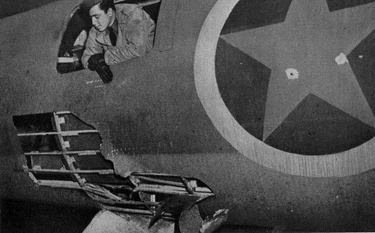
A German 20mm shell peeled the metal covering off this bomber
like skin off an onion. Note the small caliber bullet holes in the fuselage star.
SOURCE: Target: Germany by Life Magazine
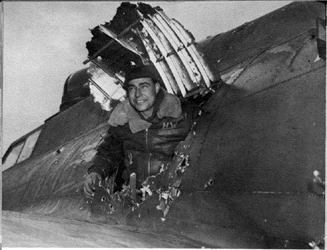
One of the crew of a B-17 which suffered battle damage during the
raid on Berlin, on March 6th 1944.
SOURCE: B-17 Flying Fortress by William Hess
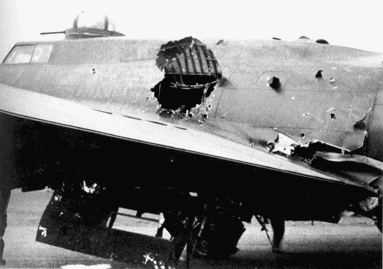
Another view of the B-17 in the previous photo, showing additional damage to the
fuselage.
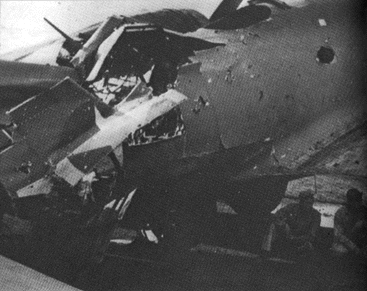
The B-17 flown by Lieutenant Kenneth R. Bragg, its fuselage and
tail almost severed, made its way home.
SOURCE: B-17 Flying Fortress by William Hess
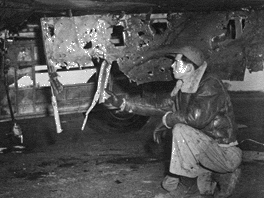
A ground crewman examines the shell shattered bomb bay doors of
a Fortress after its return from the Berlin raid.
SOURCE: B-17 Flying Fortress by William Hess
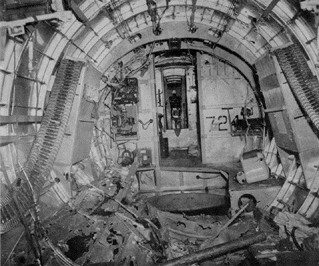
On October 15, 1944 "Little Miss Mischief"
took a flak hit on the left side near the ball turret. The blast threw the right waist
gunner to the floor, with shrapnel in his foot. See the next photo for another view of
this hit.
SOURCE: B-17 In Action by Squadron/Signal Publications
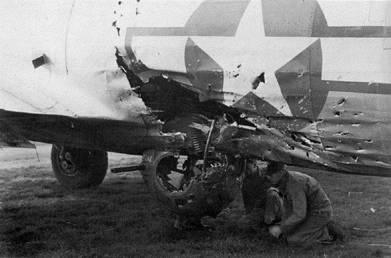
Another view of the flak hit to "Little Miss
Mischief", this shows the mangled fuselage and ball turret. Incredibly, the ball
turret gunner's only injuries were the loss of a little toe and frostbite from the high
altitude.
SOURCE: B-17 In Action by Squadron/Signal Publications

German flak batteries always set their aim on the lead aircraft of a formation and
often hit them. A shell struck this 91BG lead while bomb doors were open and radome
extended. Despite the gaping wound the bomber was brought back for a safe landing at
Rackheath, November 6, 1944.
Source: Mighty Eighth War Diary by Roger A. Freeman
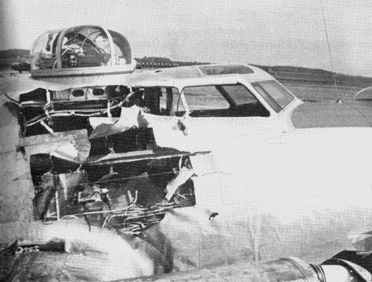
A ground launched rocket missile caused this damage to 388BG's "Panhandle"
during an attack on a V-weapon site, June 15, 1944. The missile struck number 3 engine,
ricocheted into the fuselage and exploded, leaving Sgt Biggs, the top turret gunner, with
nasty burns. Despite extensive damage to various control lines Lt McFarlane brought the
bomber down safely at Manston.
Source: Mighty Eighth War Diary by Roger A. Freeman
CONTINUE TO FUSELAGE PAGE #2
BACK TO CONTENTS PAGE










